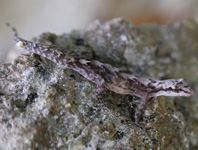Abstract
Complete redescriptions of sea cucumbers in the genus Apostichopus Liao, 1980 are provided using the type specimens and specimens deposited in the National Museum of Nature and Science, Tsukuba, Japan. The genus consists of A. armatus (Selenka, 1867) and A. japonicus (Selenka, 1867), which can be distinguished by some spicules in the dorsal body wall; the rim of reduced table spicules in A. armatus is spinous, while that in A. japonicus is smooth. Spicules from the tentacles, papillae, tube feet, and cloaca are similar for both species.
References
Augustin, E. (1908) Über japanische Seewalzen. In: Doflein, F. (Ed.), Beiträge zur Naturgeschichte Ostasiens. Abhandlungen der Mathematisch–Physikalischen Klasse der Königlich Bayerischen Akademie der Wissenschaften. Supplement 2 (1). Lindauer’schen Hofbuchdruckerei, München, pp. 1–45. [in German]
Choe, S. & Ohshima, Y. (1961) On the morphological and ecological differences between two commercial forms, “green” and “red”, of the Japanese common sea cucumber, Stichopus japonicus Selenka. Bulletin of the Japanese Society of Scientific Fisheries, 27 (2), 97–106. [in Japanese]
https://doi.org/10.2331/suisan.27.97
Clark, H.L. (1913) Scientific results of the expedition to the Gulf of California in charge of C. H. Townsend, by the U. S. Fisheries steamship ‘Albatross’ in 1911. No. 5. Echinoderms from lower California, with descriptions of new species. Bulletin of the American Museum of Natural History, 32 (8), 185–236.
https://doi.org/10.5962/bhl.title.16360
Clark, H.L. (1922) The holothurian of the genus Stichopus. Bulletin of the Museum of Comparative Zoology, 65 (3), 39–74.
Deichmann, E. (1937) The Templeton Crocker Expedition. IX. Holothurians from the Gulf of California, the West Coast of Lower California and Clarion Island. Zoologica: Scientific Contributions of the New York Zoological Society, 22 (10), 161–176.
Deichmann, E. (1958) The Holothurioidea collected by the Velero III and IV during the years 1932 to 1954 part II. Aspidochirota. Allan Hancock Pacific Expeditions, 11 (2), 253–349.
Grube, A.E. (1840) Actinien, Echinodermen und Würmer des Adriatischen und Mittelmeers. J.H. Bon, Königsberg, pp. 33–37. [in German]
https://doi.org/10.5962/bhl.title.10133
Haeckel, E. (1896) Systematische phylogenie der Echinodermen In Systematische phylogenie der Wirbellosen Thiere (Invertebrata) Zweiter Teil des Entwurfs einer systematischen Stammesgeschichte, Georg Reimer, Berlin, pp. 348–504. [in German]
https://doi.org/10.1515/9783111443935.348
International Commission of Zoological Nomenclature (1999) International Code of Zoological Nomenclature Fourth Edition. International Trust for Zoological Nomenclature, London, 306 pp.
Imaoka, T., Irimura, S., Okutani,T., Oguro, C., Oji, T., Shigei, M. & Horikawa, H. (1990) Echinoderms from Continental Shelf and Slope around Japan Vol. I. Japan Fisheries Resource Conservation Association, Tokyo, pp. 135–140.
Imaoka, T., Irimura, S., Okutani,T., Oguro, C., Oji, T. & Kanazawa, K. (1991) Echinoderms from Continental Shelf and Slope around Japan. Vol. II. Japan Fisheries Resource Conservation Association, Tokyo, pp. 190–195.
Kanno, M. & Kijima, A. (2003) Genetic differentiation among three color variants of Japanese sea cucumber Stichopus japonicus. Fisheries Science, 694, 806–812.
https://doi.org/10.1046/j.1444-2906.2003.00690.x
Kanno, M., Suyama, Y., Li, Q. & Kijima, A. (2006) Microsatellite analysis of Japanese sea cucumber, Stichopus (Apostichopus) japonicus, supports reproductive isolation in color variants. Marine Biotechnology, 8, 672–685.
https://doi.org/10.1007/s10126-006-6014-8Kuramochi, T. & Naganuma, T. (2010) Reclassification of the Apostichopus holothurians from Sagami Bay, central Japan. Biosphere Science, 49, 49–54. [in Japanese]
Lampert, K. (1885) Die Seewalzen, Holothurioidea, eine systematische Monographie mit Bestimmungs- und Verbreitungs-tabellen. In: Semper, C. (Ed.), Reisen im Archipel der Philippinen, Zweiter Theil, Wissenschaftliche Resultate 4 (3). CW Kreidel, Wiesbaden, pp. 151‒312. [in German]
Lambert, P. (1986) Northeast Pacific holothurians of the genus Parastichopus with a description of a new species, Parastichopus leukothele (Echinodermata). Canadian Journal Zoology, 64, 2266–2272.
https://doi.org/10.1139/z86-340
Levin, V.S. (1983) Japanese Sea Cucumber. USSR Academy of Science, Vladivostok, pp. 7–30. [in Russian]
Liao, Y. (1980) The aspidochirote holothurians of China with erection of a new genus. In: Jangoux, M. (Ed.), Echinoderms —Present and Past. Proceedings of the European Colloquium on Echinoderms. Balkema Press, Rotterdam, pp. 115–117.
Marenzeller, E.V. (1882) Neue Holothurien von Japan und China. Verhandlungen der Zoologisch-Botanischen Gesellschaft in Wien, 31, 121–140. [in German]
https://doi.org/10.5962/bhl.part.20315
Mitsukuri, K. (1897) On changes which are found with advancing age in the calcareous deposits of Stichopus japonicus, Selenka. Annotationes Zoologicae Japonenses, 1, 31–42.
Mitsukuri, K. (1896) A list of holothurians known to occur in Japan. Zoological Magazine, 8, 405–413. [in Japanese]
Mitsukuri, K. (1912) Studies on actinopodous Holothurioidea. Journal College Science, Tokyo Imperial University, 29 (2), 163.
https://doi.org/10.5962/bhl.title.37880
Ohshima, H. (1915) Report of the holothurians collected by the United States Fisheries Steamer Albatross in the Northwestern Pacific during the summer of 1906. Proceedings of the United States National Museum, 48, 213–291.
https://doi.org/10.5479/si.00963801.48-2073.213
Paulay, G. (2013) Apostichopus. World Register of Marine Species. Available from: http://www.marinespecies.org/aphia.php?p=taxdetails&id=241373/ (accessed 13 June 2017)
Pourtalès, L.F. (1851) On the Holothuriae of the Atlantic Coast of the United States. Proceedings of the American Association for the Advancement of Science, Fifth Meeting, Washington, 1858, 8–16.
Selenka, E. (1867) Beiträge zur Anatomie und Systematik der Holothurien. Zeitschrift für wissenschaftliche Zoologie, 17, 291–372. [in German]
Semper, C. (1868) Reisen im Archipel der Philippinen, zweiter Theil, wissenschaftliche Resultate, erster Band, Holothurien. W. Engelmann, Leipzig, pp. 288. [in German]
Stimpson, W. (1857) The Crustacea and Echinodermata of the Pacific shores of North America. H. O. Houghton and Company, Riverside, Cambridge, pp. 92.
Sun, X., Li, Q. & Kong, L. (2010) Comparative mitochondrial genomics within sea cucumber (Apostichopus japonicus): provide new insights into relationships among color variants. Aquaculture, 309, 280–285.
https://doi.org/10.1016/j.aquaculture.2010.08.001
Théel, H. (1886) Reports on the Holothurioidea dredged by H.M.S. Challenver during the years 1873–76. Part 2. Report of the Scientific Results of the Voyages of H.M.S. Challenger during the years 1873–76, Zoology, 39, 160–162.
Uthicke, S., Byrne, M. & Conand, C. (2009) Genetic barcoding of commercial Bêche-de-mer species (Echinodermata: Holothuroidea). Molecular Ecology Resources, 10 (4), 634–646.
http://dx.doi.org/10.1111/j.1755-0998.2009.02826.x
Ward, H., Holmes, B. & O’Hara, T. (2008) DNA barcoding discriminates echinoderm species. Molecular Ecology Resources, 8, 1202–1211.
http://dx.doi.org/10.1111/j.1755-0998.2008.02332.x
Zhao, H. (2015) Taxonomy and identification: distribution. In: Yang, H., Hamel, F. & Mercier, A. (Eds.), The Sea Cucumber Apostichopus japonicus: History, Biology and Aquaculture. Developments in Aquaculture and Fisheries Science, 39, pp. 46–49.
https://doi.org/10.1016/B978-0-12-799953-1.00003-9

